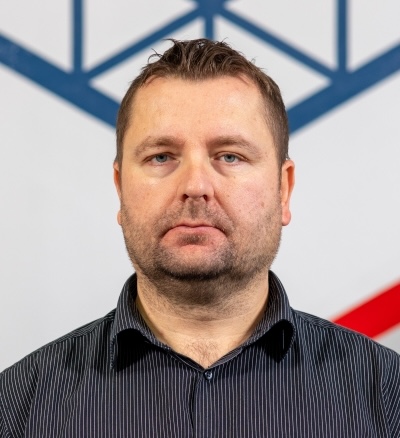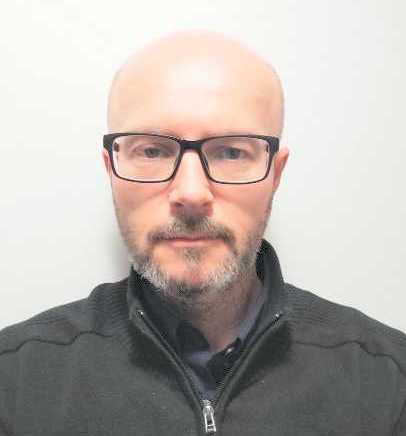Integracija teorija komunikacija, upravljanja, kibernetike, stohastike, optimizacije i strukture sustava u cilju stvaranja cjelovite teorije sustava; (2) razvoj sustava inženjerske tehnologije uključujući probleme metoda definiranja, modeliranja, simulacije, provjere sustava te tehnika oblikovanja sustava; (3) primjena gore navedenog na sklopovlje i programsku podršku pri analizi i osmišljavanju bioloških, ekoloških, sociološko-ekonomskih i operacijskih sustava čovjek-stroj.
Odjel za sustave, čovjeka i kibernetiku
Kneza Trpimira 2b, Osijek.
For more information, please contact Professor Franjo Jovic (franjo.jovic@etfos.hr).
He holds a silver and a bronze medal from the National Championship of Montengro in sailing (class 470) and has taken part in the national amateur competitions of Serbia in long distance horsebackriding and rollerblading.
For more information, please contact Professor Franjo Jovic (franjo.jovic@etfos.hr).
Predavanja u 2009. godini
Predavanje: "Vjetroelektrane i gospodarski razvoj"
U organizaciji Elektrotehničkog fakulteta Sveučilišta u Osijeku i Odjela SMC Hrvatske sekcije IEEE dana 10. veljače 2009. godine održano je predavanje
"Vjetroelektrane i gospodarski razvoj"
prof.dr.sc. Stjepan Car
KONČAR Institut za elektrotehniku d.d.
Predavanje je održano u u Vijećnici Elektrotehničkog fakulteta u Osijeku, Kneza Trpimira 2b.
Sažetak predavanja:
U Hrvatskoj se očekuje znatno povećanje korištenja obnovljivih izvora električne energije, a posebno energije vjetra i vode. Dva glavna makroekonomska pokazatelja Hrvatske izražena velikim budžetskim deficitima i vrlo visokom stopom nezaposlenosti mogu se bitno ublažiti razvojem i domaćom proizvodnjom opreme za korištenje obnovljivim izvorima. Hrvatska elektroindustrija ima veliku tradiciju i bitne reference diljem svijeta u gradnji hidroelektrana, a na području vjetroelektrana stiče izgradnjom i
radom prvog vjetroagregata "KONČAR" na Pometenom brdu u zaleđu Splita. Hrvatsko tržište važno je ne samo za stjecanje referenca domaćih tvrtki nego i za uključivanje na domaće tržište s potencijalom od oko 1 milijardi EUR, kao i na globalno tržište s porastom u duljem vremenskom periodu od preko 20%.
U izlaganju će biti izneseni svjetski trendovi na području obnovljivih izvora s naglaskom na vjetroelektrane, kao i obrađena različita tehnička rješenja vjetroagregata. Također će biti prezentirani rezultati višegodišnjih primijenjenih istraživanja i razvoja domaćeg vjetroagregata za gradnju vjetroelektrana.
O predavaču:
Prof.dr.sc. Stjepan Car diplomirao je elektrotehniku na Sveučilištu u Zagrebu 1972. godine i stekao akademsko zvanje doktora tehničkih znanosti iz područja elektrotehnike 1979. godine. Završio je niz kraćih i dužih seminara iz poslovnog upravljanja i ekonomije u zemlji i inozemstvu. Nakon diplomiranja zaposlio se u Institutu KONČAR-a gdje je radio na istraživačkim i razvojnim zadacima te postao članom Uprave KONČAR Elektroindustrija d.d. za područje korporativnog razvoja i poslovno područje industrije. Od 1998. obnaša dužnost predsjednika Uprave društva KONČAR Institut za elektrotehniku d.d. Niz godina predavao je na Veleučilištima u Zagrebu, Varaždinu i Rijeci, a od 2006. predaje na Fakultetu elektrotehnike i računarstva u Zagrebu. Zvanje izvanrednog profesora stekao je 2004. godine. Autor je više od 70 objavljenih radova i dva patenta iz područja asinkronih strojeva. Član je Tehnologijskog vijeća HAZU-a i član Predsjedništva HATZ-a, član povjerenstva fonda Jedinstvo uz pomoć znanja, te predsjednik Ocjenjivačkog suda inovacija u Zagrebu i član međunarodnog žirija za ocjenu inovacija u Genevi.
Opširnije informacije mogu se pročitati u izvornoj obavijesti o predavanju.




.gif)